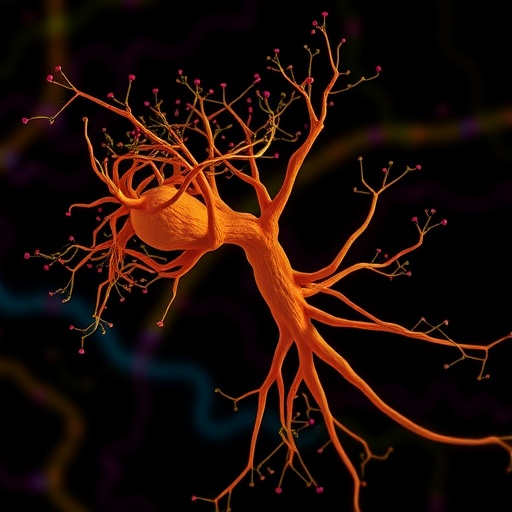In a groundbreaking study published in Nature Communications, researchers have unveiled critical insights into the role of β-tubulin mutations in disrupting ciliogenesis, leading to ciliopathy-like phenotypes. This discovery sheds new light on the complex molecular underpinnings of ciliopathies— a group of disorders arising from dysfunctional cilia, the microscopic hair-like structures essential for numerous cellular processes. The findings offer promising new avenues for understanding how subtle changes at the molecular level can cascade into profound clinical manifestations.
At the heart of this research lies the β-tubulin gene TUBB, which encodes a core protein component of microtubules. Microtubules serve as the structural framework of cilia, enabling their formation, maintenance, and motility. Mutations in tubulin isoforms have long been suspected to impair cellular architecture, but their direct impact on ciliogenesis and ciliary function has remained obscure until now. Mollica et al.’s inquiry meticulously delineates the mechanistic pathways by which aberrant β-tubulin variants compromise cilium assembly and stability.
The study employs a sophisticated blend of genetic, biochemical, and imaging techniques to dissect how TUBB mutations influence microtubule dynamics within the cilium. By introducing specific disease-associated mutations into cellular models, the team observed marked defects in the initiation of ciliogenesis, as well as disruptions in cilia length and morphology. High-resolution microscopy revealed that mutated β-tubulin subunits integrate improperly into microtubule filaments, resulting in unstable ciliary axonemes that fail to sustain normal structure and function.
Further biochemical assays demonstrated that mutant TUBB proteins exhibit altered polymerization kinetics, hampering the normal equilibrium between tubulin dimers and microtubule polymers. This imbalance appears to critically impair intraflagellar transport (IFT), a process vital for ferrying structural and signaling molecules along the cilium. Consequently, cells harboring these mutations display decreased ciliary signaling capacity, correlating strongly with the emergence of ciliopathy phenotypes observed in human patients.
Clinically, ciliopathies encompass a diverse spectrum of disorders including polycystic kidney disease, retinal degeneration, and respiratory dysfunction, among others. The newly described TUBB mutations recapitulate many features consistent with these syndromes, strengthening the link between tubulin integrity and ciliopathy pathogenesis. Notably, some affected individuals manifest neurological abnormalities, emphasizing the significance of ciliary function beyond traditional sensory and epithelial roles.
The impact of mutated β-tubulin on neuronal cilia is a particularly striking aspect of the study. Neuronal cilia are integral to brain development and signaling, and perturbations here may underlie cognitive and motor deficits seen in certain ciliopathy patients. By elucidating how TUBB mutations disrupt neuronal cilia, the research opens potential pathways for therapeutic intervention in neurodevelopmental disorders tied to ciliary dysfunction.
Another innovative facet of the study involved the generation of animal models carrying human-equivalent TUBB mutations. In vivo analyses in these models confirmed the detrimental effects on ciliogenesis and revealed phenotypic abnormalities consistent with ciliopathies, including kidney cyst formation and retinal degeneration. This translational approach provides a powerful platform for testing candidate therapies aimed at restoring normal microtubule function and cilia assembly.
Of particular interest is the study’s exploration of molecular chaperones and tubulin regulatory proteins that may modulate the impact of TUBB mutations. Preliminary data suggest that enhancing the activity of these modulators could partially rescue defective ciliogenesis, offering a novel strategy for combatting ciliopathy symptoms. Future research in this direction holds promise for the development of pharmacological agents targeting microtubule dynamics at the root of ciliary disease.
The authors also highlight the heterogeneity of ciliopathy phenotypes arising from different TUBB mutations. This phenotypic variability reflects the nuanced nature of protein structure-function relationships and emphasizes the need for personalized approaches in diagnosis and treatment. Developing high-throughput screens to characterize the functional consequences of specific tubulin variants could greatly advance precision medicine in this field.
Importantly, this research underscores the broader significance of cytoskeletal proteins beyond their canonical roles in maintaining cell shape and motility. The findings reinforce the notion that microtubule integrity is intrinsically tied to signaling cascades orchestrated by primary cilia, which act as cellular antennae. Disruptions in this nexus can propagate systemic dysfunctions, underpinning a wide array of disease phenotypes.
The implications of these discoveries extend into cancer biology as well, where aberrant ciliogenesis and microtubule dynamics are increasingly implicated in tumor progression and metastasis. Understanding how TUBB mutations alter cellular architecture may inform strategies to target microtubules therapeutically, either to restore normal ciliary function or exploit vulnerabilities in cancer cells.
Furthermore, the study exemplifies the power of integrative, multidisciplinary approaches combining genetics, cell biology, structural biochemistry, and animal modeling. Such comprehensive investigations are crucial in unraveling the complexity of diseases rooted in cellular organelle dysfunction, illustrating a blueprint for future research endeavors.
In conclusion, Mollica and colleagues have provided a compelling narrative connecting β-tubulin mutations in TUBB with the disruption of ciliogenesis and the manifestation of ciliopathy-like phenotypes. This work not only advances basic scientific understanding but also opens promising pathways for targeted diagnostics and therapeutics. The multifaceted nature of their findings promises to fuel intense research activity aimed at conquering ciliopathies and related disorders stemming from cytoskeletal aberrations.
As ciliopathies represent a frontier area of biomedical research with vast clinical implications, continued exploration of microtubule biology stands to revolutionize our capability to diagnose, manage, and ultimately treat these complex diseases. The elucidation of TUBB’s role constitutes a crucial step forward, offering hope to patients and families affected by debilitating ciliopathy syndromes worldwide.
Subject of Research: The role of β-tubulin mutations in the gene TUBB and their effect on ciliogenesis and associated ciliopathy-like diseases.
Article Title: Mutations in the β-tubulin TUBB impair ciliogenesis and are associated with ciliopathy-like phenotypes.
Article References:
Mollica, A., Omer, S., Forguson, G. et al. Mutations in the β-tubulin TUBB impair ciliogenesis and are associated with ciliopathy-like phenotypes. Nat Commun 16, 10637 (2025). https://doi.org/10.1038/s41467-025-65634-x
Image Credits: AI Generated
DOI: https://doi.org/10.1038/s41467-025-65634-x
Tags: biochemical techniques in ciliopathy studiescellular architecture and cilia formationciliary motility and structural integrityclinical manifestations of ciliopathydisruptions in cilia assembly and stabilitygenetic insights into ciliogenesis defectsmechanisms of ciliopathy disordersmicrotubule dynamics and ciliary functionmolecular pathways in cilia dysfunctionNature Communications research findingsTUBB mutations and ciliogenesisβ-tubulin gene role in ciliopathy





